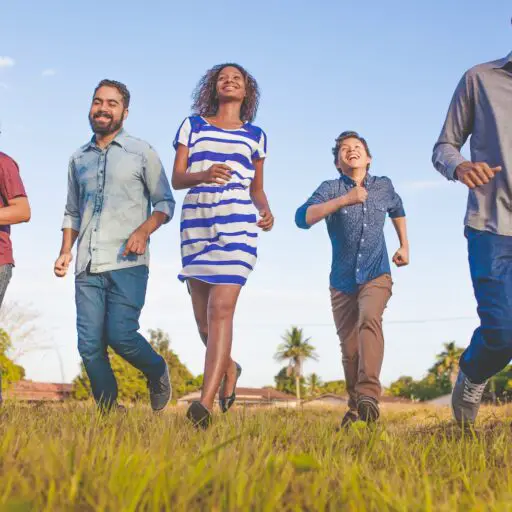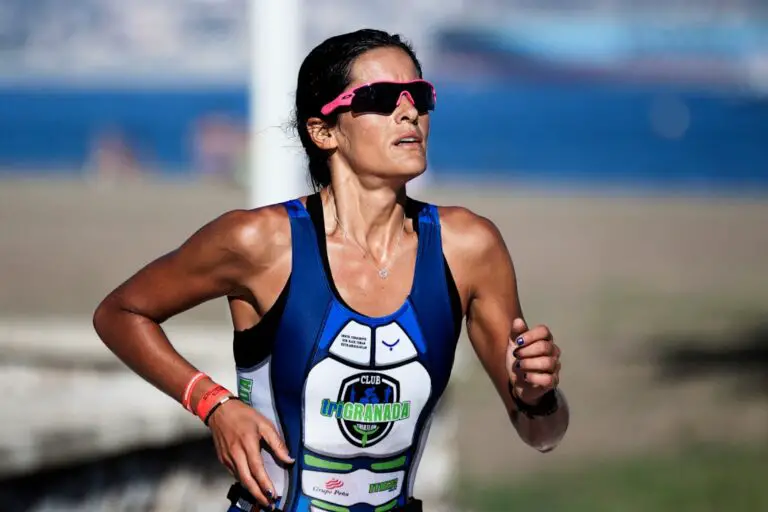Support our educational content for free when you purchase through links on our site. Learn more
What is the Point of a Walkathon? 10 Reasons to Join the Movement! 🚶♀️🌍
Have you ever wondered why walkathons have become a global phenomenon? They’re not just about putting one foot in front of the other; they’re vibrant events that unite communities, raise funds, and promote healthier lifestyles. In fact, did you know that thousands of walkathons around the world raise millions of dollars each year for various charitable causes? Whether you’re a seasoned walker or just starting your fitness journey, participating in a walkathon can be a life-changing experience.
In this article, we’ll explore 10 compelling reasons to join a walkathon, from the incredible health benefits to the joy of supporting a cause you care about. Plus, we’ll share tips on how to make the most of your walkathon experience, whether you’re walking in person or virtually. Ready to lace up your shoes and make a difference? Let’s dive in!
Key Takeaways
- Inclusive Participation: Walkathons welcome individuals of all ages and fitness levels.
- Fundraising Power: They raise significant funds for charities and important causes.
- Health Benefits: Regular walking improves cardiovascular health and boosts mental well-being.
- Community Connection: Walkathons foster a sense of unity and social engagement.
- Fun and Festive Atmosphere: Enjoy music, entertainment, and camaraderie during the event.
Ready to gear up for your next walkathon? Check out our recommended walking shoes and moisture-wicking clothing to ensure you’re comfortable and stylish while making a difference! 🌟
Table of Contents
- Quick Tips and Facts
- What is a Walkathon and Why Participate?
- The Purpose Behind Walkathons: Fundraising and Awareness
- How Walkathons Benefit Communities and Charities
- Notable Walkathons Around the World
- The Evolution of Walkathons: A Brief History
- Etymology of the Term “Walkathon”: Where Did It Come From?
- How to Organize a Successful Walkathon
- Tips for Participants: Getting the Most Out of Your Walkathon Experience
- Health Benefits of Participating in a Walkathon
- Walkathon Gear: What You Need to Bring
- Walkathon Myths Debunked: What You Need to Know
- Conclusion
- Recommended Links
- FAQ
- Reference Links
Quick Tips and Facts 🚶♀️🚶♂️🏆
- Walkathons are inherently inclusive, welcoming people of all ages and fitness levels.
- They’re a fantastic way to kickstart a healthier lifestyle while contributing to a worthy cause.
- Ever wondered how walkathons make money? It’s a fascinating blend of individual effort and community support!
- Globally, thousands of walkathons raise funds for various causes, from medical research to disaster relief.
- Virtual walkathons are gaining popularity, allowing anyone, anywhere, to participate. 🌎
What is a Walkathon and Why Participate? ❔🚶♀️🚶♂️
A walkathon, at its heart, is a community-driven event where individuals walk a predetermined distance to raise funds and awareness for a specific cause. Think of it as a fun, healthy, and impactful way to make a difference!
Why Walkathons are Awesome:
- Accessibility: Unlike marathons, walkathons are designed for everyone, regardless of age or fitness level. It’s about participation, not competition!
- Social Connection: Walkathons are a fantastic opportunity to connect with like-minded individuals, build friendships, and strengthen community bonds.
- Supporting a Cause: Whether it’s finding a cure for a disease or supporting local initiatives, your participation directly contributes to a worthy cause.
- Health Benefits: Walking is a fantastic low-impact exercise that offers numerous health benefits, from boosting cardiovascular health to improving mental well-being. Check out the amazing health benefits of walkathons on our site!
- Fun Factor: With music, entertainment, and a vibrant atmosphere, walkathons are a fun-filled experience for participants and spectators alike.
The Purpose Behind Walkathons: Fundraising and Awareness 💰📣
Walkathons serve a dual purpose:
- Fundraising: Participants gather pledges from friends, family, and colleagues, who donate based on the distance walked or a fixed amount. This collective effort raises significant funds for the chosen cause.
- Awareness: Walkathons bring visibility to important issues, sparking conversations and educating the public. They act as a powerful platform to advocate for change and inspire action.
How Walkathons Benefit Communities and Charities 🤝❤️
The impact of walkathons extends far beyond the event itself:
- Financial Support: The funds raised provide vital resources for charities and organizations to further their missions, whether it’s funding research, providing essential services, or supporting those in need.
- Community Building: Walkathons bring people together, fostering a sense of unity and shared purpose. They create opportunities for individuals to connect with their community and contribute to its well-being.
- Promoting Healthy Lifestyles: By encouraging physical activity, walkathons promote healthy habits and raise awareness about the importance of exercise.
Notable Walkathons Around the World 🌎🚶♀️🚶♂️
From local community events to large-scale international campaigns, walkathons have become a global phenomenon. Here are a few inspiring examples:
- AIDS Walk: One of the largest and most impactful walkathons globally, raising millions of dollars for HIV/AIDS research, prevention, and support services.
- Breast Cancer 3-Day: A powerful event where participants walk 60 miles over three days to raise funds for breast cancer research and support programs.
- March for Babies: This heartwarming walkathon supports the March of Dimes, an organization dedicated to improving the health of mothers and babies.
- Terry Fox Run: This annual Canadian event honors Terry Fox, a young cancer patient who ran across Canada to raise awareness and funds for cancer research.
The Evolution of Walkathons: A Brief History 🕰️🚶♀️🚶♂️

The concept of walking for a cause has ancient roots, but the modern walkathon, as we know it, emerged in the 20th century.
- 1953: The first recorded walkathon was organized by Ramón Rivero (Diplo) in San Juan, Puerto Rico, to raise funds for the Liga Puertorriqueña Contra el Cáncer.
- 1968: The first walkathon on the US mainland took place in Minneapolis, Minnesota, organized by the American Freedom from Hunger Foundation.
- 1970s and Beyond: Walkathons gained immense popularity as a fundraising tool for various causes, with events like the AIDS Walk and Breast Cancer 3-Day becoming global movements.
Etymology of the Term “Walkathon”: Where Did It Come From? 🤔📚
The word “walkathon” is a blend of “walk” and “marathon,” combining the accessibility of walking with the endurance aspect of a marathon. It first appeared in the mid-20th century and quickly became synonymous with charity walks.
How to Organize a Successful Walkathon 🎉🚶♀️🚶♂️🏆
Organizing a walkathon requires careful planning and execution. Here’s a step-by-step guide to help you get started:
- Define Your Cause and Goals: What cause are you passionate about? What impact do you hope to make? Clearly define your mission and set realistic fundraising goals.
- Build a Team: Assemble a dedicated team of volunteers to handle various aspects of the event, from logistics and marketing to fundraising and participant support.
- Choose a Date, Time, and Location: Select a date that works well for your target audience and secure a safe, accessible, and inspiring location for the walk.
- Develop a Budget: Outline all anticipated expenses, from permits and insurance to marketing materials and event supplies. Explore potential sponsorships to offset costs.
- Create a Marketing Plan: Spread the word far and wide! Utilize social media, email campaigns, local media outreach, and flyers to promote your event.
- Set Up Online Registration and Fundraising: Choose a user-friendly platform that allows participants to register online, create fundraising pages, and collect donations easily.
- Plan the Walk Route: Design a safe and well-marked route that is appropriate for different fitness levels. Consider offering various distance options to accommodate all participants.
- Organize Logistics: Arrange for essential amenities like water stations, restrooms, first-aid services, and entertainment along the walk route.
- Recruit Volunteers: Volunteers are the backbone of any successful event. Recruit enthusiastic individuals to assist with registration, route marshalling, participant support, and more.
- Host the Walkathon: Create a fun, welcoming, and inspiring atmosphere for participants. Cheer them on, celebrate their achievements, and make it a memorable experience.
- Follow Up and Express Gratitude: After the event, thank participants, volunteers, and sponsors for their contributions. Share the impact of their efforts and announce the total funds raised.
Tips for Participants: Getting the Most Out of Your Walkathon Experience 🤩🚶♀️🚶♂️
Participating in a walkathon is an incredibly rewarding experience. Here are some tips to enhance your enjoyment and maximize your impact:
- Register Early: Secure your spot and take advantage of early bird discounts if available.
- Set a Fundraising Goal: Challenge yourself to raise a specific amount and share your fundraising page with your network.
- Train Gradually: If you’re not accustomed to walking long distances, start with short walks and gradually increase your mileage.
- Wear Comfortable Shoes and Clothing: Choose breathable fabrics and supportive footwear to prevent blisters and discomfort.
- Stay Hydrated: Drink plenty of water before, during, and after the walk to stay hydrated.
- Pace Yourself: Don’t start too fast. Find a comfortable pace that you can maintain throughout the walk.
- Enjoy the Experience: Soak up the atmosphere, connect with fellow participants, and celebrate your accomplishment.
- Share Your Story: Use social media or personal blogs to share your walkathon experience and inspire others to get involved.
Health Benefits of Participating in a Walkathon 💪❤️🧠
Beyond the fundraising and awareness aspects, participating in a walkathon offers a wealth of health benefits:
- Improved Cardiovascular Health: Walking is a fantastic cardio workout that strengthens your heart, lowers blood pressure, and improves cholesterol levels.
- Weight Management: Regular walking helps burn calories and maintain a healthy weight.
- Stronger Bones and Muscles: Walking is a weight-bearing exercise that strengthens bones and muscles, reducing the risk of osteoporosis and falls.
- Boosted Immune System: Moderate exercise, like walking, can strengthen your immune system and reduce the risk of illness.
- Reduced Risk of Chronic Diseases: Studies have shown that regular walking can lower the risk of developing chronic diseases such as type 2 diabetes, heart disease, and certain types of cancer.
- Improved Mental Health: Walking releases endorphins, which have mood-boosting effects. It can reduce stress, anxiety, and symptoms of depression.
- Better Sleep: Regular physical activity, including walking, can improve sleep quality and reduce the risk of insomnia.
Walkathon Gear: What You Need to Bring 🎒🚶♀️🚶♂️
Preparing with the right gear can significantly enhance your walkathon experience. Here’s a checklist of essentials:
- Comfortable Walking Shoes: Invest in a good pair of walking shoes that provide adequate support, cushioning, and breathability.
- Moisture-Wicking Clothing: Choose breathable fabrics that wick away sweat and keep you cool and dry.
- Sunscreen: Protect your skin from harmful UV rays, even on cloudy days.
- Hat: A hat can provide additional sun protection and shade for your face and neck.
- Sunglasses: Shield your eyes from the sun’s glare and reduce eye strain.
- Water Bottle: Stay hydrated throughout the walk by carrying a reusable water bottle.
- Snacks: Pack energy-boosting snacks like trail mix, granola bars, or fruit to keep your energy levels up.
- Small Backpack or Waist Pack: Carry your essentials comfortably with a small backpack or waist pack.
- Phone and Charger: Stay connected, capture memories, and track your progress with your phone. Don’t forget a portable charger!
- First-Aid Kit: Be prepared for minor injuries with a basic first-aid kit containing bandages, antiseptic wipes, and pain relievers.
Walkathon Myths Debunked: What You Need to Know 🤔❌
Let’s debunk some common misconceptions surrounding walkathons:
- Myth 1: Walkathons are only for serious athletes. ❌ Absolutely not! Walkathons are designed for people of all fitness levels. It’s about participation and supporting a cause, not speed or endurance.
- Myth 2: I need to be able to walk for hours to participate. ❌ Most walkathons offer various distance options to accommodate different fitness levels. You can choose a distance that suits your capabilities.
- Myth 3: I won’t be able to raise much money. ❌ Every dollar makes a difference! Don’t underestimate the generosity of your network. Even small donations add up to create a significant impact.
- Myth 4: Walkathons are boring. ❌ On the contrary, walkathons are typically vibrant and festive events with music, entertainment, and a strong sense of community.
Ready to find your perfect walkathon? Explore exciting global walkathon events and start making a difference today! 🌎🚶♀️🚶♂️
Conclusion 🎉🚶♀️🚶♂️

In summary, walkathons are not just about putting one foot in front of the other; they are powerful events that unite communities, raise funds, and promote healthy lifestyles. Whether you’re participating as an individual or organizing a large-scale event, the benefits are immense.
Positives:
- Inclusivity: Open to all ages and fitness levels.
- Community Engagement: Strengthens bonds and raises awareness for important causes.
- Health Benefits: Promotes physical activity and mental well-being.
- Fundraising Potential: Effective way to generate significant funds for charities.
Negatives:
- Logistical Challenges: Organizing a successful event requires careful planning and coordination.
- Weather Dependency: Outdoor events can be affected by inclement weather, necessitating contingency plans.
Overall, we confidently recommend participating in or organizing a walkathon. It’s a fulfilling way to contribute to a cause you care about while enjoying the benefits of physical activity and community connection. So, lace up those walking shoes and get ready to make a difference! 🌟
Recommended Links 🛒
-
👉 Shop Walkathon Gear:
- Comfortable Walking Shoes: Amazon | Nike Official Website | Adidas Official Website
- Moisture-Wicking Clothing: Amazon | Under Armour Official Website
- Water Bottles: Amazon | Hydro Flask Official Website
-
Books on Fundraising and Event Planning:
FAQ ❓
What are the benefits of participating in a walkathon for individuals and communities?
🏃♂️🏃♀️
For Individuals:
- Physical Health: Regular walking improves cardiovascular health, strengthens muscles, and helps maintain a healthy weight.
- Mental Well-being: Participating in a walkathon can boost mood, reduce stress, and enhance overall mental health.
- Social Connections: Walkathons provide opportunities to meet new people and strengthen community bonds.
For Communities:
- Fundraising: Walkathons raise significant funds for local charities and initiatives, directly benefiting the community.
- Awareness: They promote awareness of various causes, encouraging community engagement and education.
- Unity: Walkathons foster a sense of belonging and collective effort toward a common goal.
Read more about “Discover 10 Amazing Benefits of a Walkathon You Never Knew About! … 🚶♀️✨”
How do walkathons raise money and support for charitable causes and organizations?
💰
Walkathons typically operate on a pledge system where participants collect donations from friends, family, and colleagues based on the distance they walk. Here’s how it works:
- Registration Fees: Participants often pay a fee to register for the event.
- Pledges: Walkers gather pledges from sponsors who commit to donating a certain amount per mile walked or a flat donation.
- Event Day: Participants complete the walk, and sponsors fulfill their pledges based on the distance walked.
- Corporate Sponsorships: Many walkathons also secure sponsorships from local businesses, further increasing funds raised.
What are some tips for organizing a successful walkathon event, whether in-person or virtual?
📅
- Set Clear Goals: Define your fundraising target and the cause you are supporting.
- Build a Team: Assemble a group of dedicated volunteers to help with planning and logistics.
- Choose an Accessible Location: Ensure the route is safe and suitable for all participants.
- Promote the Event: Use social media, local media, and community outreach to spread the word.
- Engage Participants: Create a fun and festive atmosphere with entertainment, refreshments, and activities.
- Follow Up: After the event, thank participants and sponsors, and share the impact of their contributions.
Read more about “What is a Virtual Walkathon? Discover 10 Essential Insights for 2025! 🚶♀️🌍”
Can virtual walkathons be just as effective as in-person events in terms of fundraising and community engagement?
🌐
Absolutely! Virtual walkathons have gained popularity, especially during the pandemic. They can be just as effective due to:
- Wider Reach: Participants from anywhere can join, increasing the potential for donations.
- Flexibility: Participants can walk at their convenience, making it easier for more people to get involved.
- Engagement: Virtual platforms can include social media challenges, live-streamed events, and online communities to keep participants connected and motivated.
How can I get involved in a virtual walkathon, and what are the technical requirements for participation?
💻
To get involved in a virtual walkathon:
- Find an Event: Look for upcoming virtual walkathons through social media, community boards, or charity websites.
- Register Online: Sign up through the event’s website and pay any registration fees.
- Gather Pledges: Use online fundraising platforms to collect donations from your network.
- Participate: Walk the designated distance at your own pace and share your experience on social media.
Technical Requirements: A smartphone or fitness tracker to track your distance, access to the internet for registration and fundraising, and social media accounts for sharing your journey.
What types of charitable causes and organizations are typically supported by walkathons, and how can I choose a cause to support?
❤️
Walkathons support a wide range of causes, including:
- Health Research: Organizations focused on diseases like cancer, diabetes, and heart disease.
- Community Services: Local charities that provide food, shelter, and support to those in need.
- Environmental Causes: Initiatives aimed at conservation and sustainability.
To choose a cause, consider your personal passions, the impact of the organization, and how it aligns with your values. Research local charities to find one that resonates with you.
Are there any health benefits to participating in a walkathon, and how can I prepare physically for the event?
🏋️♂️
Yes! Participating in a walkathon offers numerous health benefits, including improved cardiovascular health, weight management, and enhanced mental well-being. To prepare physically:
- Train Gradually: Start walking shorter distances and gradually increase your mileage.
- Incorporate Strength Training: Build muscle strength to support your walking.
- Stay Hydrated and Eat Well: Maintain a balanced diet and drink plenty of water leading up to the event.
- Rest and Recover: Allow your body to recover with adequate rest days.
How can I fundraise and recruit sponsors for a walkathon, and what are some effective strategies for meeting my fundraising goals?
💵
To fundraise effectively:
- Set a Personal Goal: Challenge yourself with a specific fundraising target.
- Leverage Social Media: Share your fundraising page on social media platforms to reach a wider audience.
- Create Engaging Content: Use photos, videos, and personal stories to connect with potential donors emotionally.
- Host Mini-Events: Organize smaller fundraising events leading up to the walkathon to boost donations.
- Thank Your Donors: Show appreciation to your sponsors and keep them updated on your progress.
What are some ways to make a virtual walkathon more engaging and interactive, such as through social media challenges or virtual ceremonies?
🎊
To enhance engagement in a virtual walkathon:
- Social Media Challenges: Create fun challenges that participants can share online, such as themed outfits or creative walking routes.
- Live Streaming: Host live events or Q&A sessions with organizers or beneficiaries to keep participants connected.
- Virtual Ceremonies: Celebrate achievements with online award ceremonies or recognition for top fundraisers.
- Interactive Leaderboards: Use online platforms to display fundraising progress and encourage friendly competition among participants.
Reference Links 🔗
- Wikipedia: Walkathon
- OneCause: Walkathon
- 99Pledges: Walk-a-thon Fundraiser
- American Cancer Society: Relay for Life
- AIDS Walk: Official Site
- Breast Cancer 3-Day: Official Site
- March of Dimes: March for Babies
By participating in or organizing a walkathon, you’re not only making strides for your health but also for the community and causes that matter. So, let’s get walking! 🚶♀️🚶♂️🌟


